The Real Market With Chris Rising – Ep. 13 Andre Bueno

00:49 CR: So today on the Real Market, we have a very interesting conversation about one of the big challenges we face here in the state of California, and specifically, in Southern California, and that’s affordable housing. I have an interesting conversation with Andre Bueno. Andre is President of the Bueno Group, an affordable developer that does business here in the state of California, as well as, other parts of the country. We really dive in to what it means to be an affordable developer. What are the issues? What are the challenges? And really what are the challenges that face us as a region here in Southern California? We also dig in a little bit to the kind of technology he uses for his company, running a business that is between states, and a very interesting discussion about his background. I think you’ll all like it very much, and enjoy the podcast.
01:42 CR: Welcome to The Real Market. I’m really excited to have Andre Bueno with me. He’s the president of Bueno Group, an affordable housing developer, but I think what’s really interesting about Andre and what he does is he’s one of the only young, millennial affordable housing developers I’ve met. So I’m excited to have Andre on the phone and in this discussion. And, Andre, welcome to the podcast.
02:06 Andre Bueno: Thank you, Chris. I appreciate your time.
02:07 CR: Well, first of all, can you describe for us a little bit about what the Bueno Group is?
02:12 AB: Sure. My parents started the business in the late ’80s. A lot of what they were doing was more like helping house families who were either first time homeless in the San Gabriel and San Fernando Valley. We helped work with a lot of Section 8 families and eventually started getting into tax credit and more affordable housing development.
02:36 CR: Wow. That’s a great story. Did you go to high school out in the San Gabriel Valley or where’d you go to high school?
02:41 AB: I started going to high school in Pasadena, but then my parents thought it’d be best if we relocated back to Brazil, and I spent my teenage years there.
02:51 CR: Oh, wow. That’s pretty exciting. And did your parents continue into this kind of affordable housing business when they went back to Brazil?
03:02 AB: Yeah. So they… I guess they’re still in the business. I took over their business in 2006, and I did that when I came back to the States. They’ve pretty much always been in this space. This is where they grew up. This is what they understand. This is just the area that really made a lot of sense to them.
03:23 CR: Wow, that’s terrific. And it obviously clicked with you, but between going to high school in Pasadena and moving to Brazil, tell us a little bit about what your life experience was before 2006.
03:36 AB: Well, my brother and I, we grew up in a very small family. We had just my mom and my dad here in the States. The rest of our extended family was all in Brazil. So it meant that my childhood hobbies were painting, and cleaning, and plumbing, and installing carpets, and doing a whole bunch of stuff that every 12-year-old loves to do. They just never talk about it.
04:02 CR: That’s terrific. And then where did you go to college? And tell us a little bit about your educational experience.
04:07 AB: Sure. When I came back from Brazil, my high school transcripts didn’t really translate over, and instead of sitting for a GED, I went to community college. And at the time, my aspirations were… I just wanted to just manage this small apartment community, and at the time, I was a competitive bodybuilder. I’m going to community college, 2006 basically creeps up on us, 2007, 2008, and I’m thinking to myself, “I really know what I’m doing.” And I had all of our deposits with this bank called IndyMac, and we had a loan with this bank called Washington Mutual. So then both of those guys disappear. And I have this fire, and I’m 18 years old. I’m trying to put together this apartment building. I’m calling my parents in Brazil, and I’m like, “How do you deal with this?” They’re like, “We’ve run this for over 20-something years. We’ve never had a fire.”
05:07 CR: I was gonna say, that’s not quite a little fire. That’s a big fire. And at 18 years old, to put it in perspective, it must have been overwhelming in how you deal with it.
05:19 AB: I was supposed to be on spring break, man. No spring break for me.
05:23 CR: Yeah. Wow. And at the time, you said you were a competitive bodybuilder, so you obviously had a lot of self-discipline. Was there anything in what you were doing with your physical workouts that helped you get through this period? And how did it end up? What ended up happening?
05:38 AB: Well, at the time, my aspirations were to be a competitive bodybuilder. I was ranked number three in the US at the time, and I had a training accident. I smashed one of my fingers. I’m trying to get through this thing with work. I can’t really do the bodybuilding stuff, and that’s when I’m going to the gym one day and I meet this guy, who’s an investment banker, he’d worked at Goldman Sachs for about a decade, and I start telling him about what I wanted to do, and he starts learning about my family business. And basically, gives me the advice, “If you wanna make a little difference, then you continue doing what you’re doing. If you wanna make a big difference, then you need capital and you need to be surrounded by the right people.”
06:23 CR: That’s probably a pretty good advice.
06:25 AB: Oh, it was great advice. I ended up going and I get into the Yale of the West Coast known as Loyola Marymount.
06:34 CR: Good judge for a university.
06:38 AB: And going there, really opened up my eyes to, there’s more to running a business other than the business itself. It’s your personal ethics. And how do you view the world and what are the, I guess, different nuances that you don’t necessarily read in a textbook? So I went down the path, got a job in investment banking, worked on Wall Street for a couple of years, was miserable. I was doing a job where I didn’t really have a purpose. And that’s where I started to bring it back and start thinking about, how do I come back doing what my parents were doing and continue to build on that?
07:15 CR: Well, that’s obviously a terrific story and I understand the passion for doing things that ignite your spirit. Kinda bringing it back full circle to, we started with affordable developer. How would you describe what it means to be an affordable housing developer?
07:36 AB: Man, I’d say 15%-20% finance, structured finance. And then the majority of the work you’re gonna be doing is more related to public policy and social related programs.
07:51 CR: So, does the Bueno Group, is that a for-profit business or is it a non-profit?
07:57 AB: We operate in the for-profit model, but we partner up with non-profits to help with the, whatever services we need.
08:05 CR: Well, can you get into that a little bit further? I think it’d be very interesting for people and we’re gonna talk further about the housing crisis we’re dealing with here in California. But I think a lot of people immediately hear, “affordable” and they think, “Oh! That must be a non-profit.” And I think it probably deters some people from wanting to be in the business. Talk a little bit about how your company can operate within the for-profit world and how you partner with the non-profits.
08:30 AB: Sure. To give you an idea, about two and a half years ago, we picked up 17 apartment buildings in Michigan. And over a nine-month period, we went gangbusters and picked up a whole bunch of assets in this one town, which is the state capital of Michigan, Lansing. And Lansing’s a college town. But you also have lots of government employees who work here, lots of workforce housing, but there’s also that forgotten sector of the political refugees, the homeless veterans. And a lot of what we were doing was we picked up a lot of these assets out of bankruptcy, who were in not so great shape. And we were, during the last political administration, we were partnered up with the US Office of Refugee Resettlement. And we were helping house a lot of these refugees who were just getting into the country, needed a place to live, and we were providing that housing.
09:28 CR: Wow! Now, how did you raise the capital to buy the properties, to begin with? Did you go out to investors? Is it your own capital? How did that happen?
09:37 AB: A lot of this capital came from two sources. One, I was managing funds for a wealthy family. And also, I had rolled in some funds that we had from a smaller sale from one of our assets in Los Angeles.
09:55 CR: Okay, and then the next step? [chuckle] You get these tied up and then where did you go? As you’re dealing with the refugees and deciding where on the affordable you wanted to be, you obviously had to have a return threshold that you were trying to hit if you were investing people’s money for profit. Talk a little bit further about that.
10:17 AB: Sure. A lot of these assets that we’re picking up, we’re picking them up at such a low basis. We were buying assets that were built in between 1950s and the 1970s, that, we’re getting them out of bankruptcy, we’re paying for them, basically, all equity, even banks didn’t wanna lend on this kind of product. We’re picking up buildings that were 28, 30% occupied in communities that had struggled for the last 10 to 15 years to keep it together. And a lot of what we were doing was, on one hand, we’re bringing in the right individuals. But on the other hand, it’s partnering up with these non-profits that had the services to help ensure that people were on track and people were getting jobs. And ultimately, we were helping provide for something better than they would have in another place.
11:02 CR: Was there any magic to why you went to Michigan?
11:05 AB: There were a couple of things. I wanted to really get the experience of how do we go into an area that’s been extremely, I guess, depressed and forgotten? After the financial crisis a lot of these communities were basically written off. And to be able to go into a neighborhood and we’re buying assets that are not operating that efficiently that have lots of vacancies that we were able to add a lot of value. It doesn’t necessarily mean we need to take the asset and turn it into a Class A building. Sometimes the Class C model works out pretty well too.
11:44 CR: That’s a very good point. That’s a very good point. I do know that in the world that our company functions is, and sometimes, that point gets missed about where one can find returns along the spectrum of the asset class spectrum and the class of asset. Let me ask you this, you’ve had this experience out in Michigan and you have done and are doing projects here in California. There’s a lot of words that get batted around with affordable housing. Obviously, the number one is affordable, but then you hear about workforce housing, you hear about Section 8 housing. How does it all play in your world? Are there very clear definitions for all of these things? Do the definitions mixed into each other? Kinda give the audience an education on what it means to be an affordable housing developer, and with those kind of keywords you hear about all the time.
12:37 AB: Sure. There is one, there’s a Section 8 program. Section 8 program is one in which it could play out in two ways. The first one is, the choice voucher program, where if someone is making, call it 30% of the average median income. So, if LA County’s average median income is 72,000, 30% of that, we’re looking at 21 and some change. If you’re making 21,000 or less, you would qualify for a Section 8 program. And that means that in the world of today, these programs are extremely overburdened, and the wait lists are insane. I think they’re more than five or six hundred thousand people waiting to get on the voucher program in Los Angeles County. The second type…
13:22 CR: That’s a huge number, we’re a county of 10 million. And you’re saying, roughly, give or take 10 million, about 500,000 are trying to apply to get into Section 8 housing. That’s a profound statistic.
13:35 AB: Well, think about all the people who are not applying either, who are discouraged. It’s an insane amount of people, and California just can’t seem to get on the same page about which policies can be enacted to help house all these different individuals.
13:54 CR: It certainly seems that way. Section 8 is talking about really, the lowest economic, on the scale, the lowest economic where people make money. What about workforce housing? I’ve always heard that that’s more like teachers, and firemen, and cops. That to me, still seems like a huge difference though, between someone who’s making 21,000 and someone who might be making 75,000 or 100,000, or a dual income family. Is there something in between that, in between workforce housing and Section 8?
14:29 AB: Section 8 is a specific program. Then you have affordable housing, which will extend from 60% of the average median income and lower. And then you have workforce housing, which is 80% to 120% of the average median income. These are all different thresholds. The reality is we have programs in place to build the affordable housing. You have the Low-Income Housing Tax Credits, New Market Tax Credits. You have different vehicles for those to happen, but when it comes to workforce housing, that’s always the forgotten middle.
15:05 CR: And in your opinion, why do you think it’s the forgotten middle when it comes to people building market-rate housing? How come market-rate housing can’t include or does not, especially here in California, workforce housing? Why is the markets so much different?
15:23 AB: In my opinion, I think a lot of this is the result of supply and demand. We go to places like here in the Midwest, you have Class C, you have Class A housing, and then you have the Class C housing that it got fixed up, it got rehab, the area improved a little bit, and it’s somewhere right there in the middle. Versus, on the West Coast, your land costs are so high, your construction costs are really high, your material costs are really high. You have a tremendous legislative burden of figuring out all the different ordinances and laws, and what you can and cannot do, and how you can do it, and which proportion. You could start on a project today, and maybe you finish entitling it in a year, or maybe it takes three years, or maybe it never gets entitled. There’s just a labyrinth that it doesn’t matter how good you are, there’s a significant amount of luck and force of will that you need to have to go through any sort of development project in California.
16:27 CR: Obviously, we hear the Mayor Garcetti talk about this a lot. It comes up in our state legislature. And I think from my perspective, I, too, get frustrated, because I see… Part of me understands why we have a lot of the environmental rules that we have. I think some of them have the best intent and have done a lot of good things, but we never really wanna deal with the negative. And I think what’s happening now is the negative, is the fact that we have a homeless problem, which I think is so anti-American to say. It’s just that we allow people to live on the streets, and who are sick, who need a helping hand, we can’t help them, that population in LA County continues to grow.
17:12 CR: And then we have this other problem that the way we do our development, we keep pushing people out, out, out further to be able to afford housing and then come back to the job, so the quality of life is difficult. So there’s a whole lot of things at play, but at some point, we’re gonna have to solve these problems. Rents continue to increase. It continues to be an unaffordable place for a majority of Los Angelenos and Californians to live. For somebody’s who’s fighting that battle every day, if you could take the eraser to the chalkboard and start over, or… I know that’s probably pretty drastic. Let’s just say, if there are three to five things that you think need to be changed, so that we can solve this, what would it be?
17:54 AB: I think first and foremost, everyone needs to get on the same page. As much as I’d love the eraser method of erasing CEQA, and going to communities, and saying, “Look, guys, you’ve had the last, I don’t know however long you’ve lived in this community, and it’s been two stories max. The reality is this entire city needs to be five to six stories minimum. We need to start housing people. We need to take them off the streets. We’re probably gonna have some transitional housing sprinkled around the neighborhoods.” As much as I’d love for something like that to happen, there’s just too many competing priorities. You have certain people that have their special interests and they’re doing things, they’re positioning it in a certain way. The reality is it’s like we need to build more. If we look at for example, what’s happening in Downtown LA. Right around November-December an article came out. The vacancy rate in Downtown Los Angeles was 17%. “Oh my god, are we over built? This is terrible. The market’s gonna crash.” Last month, vacancy rate’s at 6%. Takes time to absorb.
19:04 CR: And all of those, by the way are, for the most part, market rate housing. And so by definition, they’ll find their level and then they’ll lease. But that doesn’t solve some of the problems we face. I will tell you I was in a conversation yesterday and when people talk about Los Angeles, and I think it’s easy to do it when you sit in an ivory tower you’re saying, “Oh, we just have no idea how this Oceanwide thing is gonna go in the metropolis. We could have a lot of vacancy in downtown.” I just chuckle at it because, “Hey, maybe Oceanwide will get wiped out ’cause they’re condos.” I don’t know either way, but I guarantee that those housing units are gonna get filled, because the demand is so strong, especially in context of quality of life. Because people wanna be… The traffic is so horrendous now. But let’s go a little bit further. If you were sitting with the Mayor or the Governor right now and they say to you, “I’m gonna give you a special power for one project and you can wipe away regulations or you can wipe away… ” Would it be CEQA? Is that the number one? You’d say, “Just give me a project without CEQA?” Or are there other things that aren’t as well known to the real estate community and the community as a whole that is preventing more affordable housing being built.
20:21 AB: It’s an entire labyrinth of things. It’s not just one thing that creates the stoppage. It’s everything else that’s jammed in that pipe. For example, if you’re building more than 50 apartments, then by right, then you have to go through a plan check or a site plan review. In order to go through site plan review you need to have drawings and you need to have everything put together, and there’s a chance that maybe they like it and maybe they don’t like it, then you need to get it cleared by the community. There are too many decision-makers, that if one of them has an alternate reality of what things should be, or how things should be done, that can change the fate of a project instantly.
21:04 CR: And just to be clear for our listeners, you’re talking about, I know very well what it is, a site plan review. But you spend money on architects, you spend money on engineers and you’ve come up with a plan that you think best serves the site. And it’s what you’re saying, and which I know to be true is, depending on who you get reviewing that, it could be a total waste of money and they can tell you to go back to ground zero and start over again, or they can be helpful and say there are some logical reasons why we need to change this. But I think what I find so frustrating is you never know who’s gonna be reviewing that, and you never know what their motives are. Is that a fair characterization?
21:43 AB: Of that one component?
21:46 CR: Yeah.
21:47 AB: Absolutely. But now let’s say, for example, that they say, “Hey, looks good,” and you go and present it to the community and for whatever reason, someone just doesn’t wanna live by veterans. Doesn’t wanna live by someone that makes less money than them, or doesn’t wanna live next to just other people in general for no other reason.
22:05 CR: Yeah, the NIMBY, the NIMBY problem. And now there’s another acronym, maybe you know it off the top of your head that goes beyond NIMBY, it’s something on the line of, “Don’t build anything anywhere at any time,” which has become the new role of certain people who used to be NIMBYs which is, “We just wanna stop growth,” which isn’t possible. When you look at it, I agree with you that we all have to get on the same page, but I don’t know if our system is designed well enough for that. Are there anything… Are there things that you see out there that give you any hope that we can get more efficient at building workforce and affordable housing as well as market rate housing? Are there some bright spots out there that you can talk about or should we leave this discussion very depressed?
22:56 AB: No, I’m hopeful about eminent domain. That’s a joke. But the…
23:01 CR: I was gonna say, “Wow, you wanna get some comments in here.”
23:06 AB: Just get it done. Just get it done. Just that part of town. Let’s do it. No, that’s such a challenging thing. In order for the public… Because the public has a lot of say in what gets built and how it gets built. In order for the public to understand that the reason why rent prices are so high, it’s because a lot of things that need to be built are not being built. So you have more people that are competing for the same product. When I go out and I’m looking to rent an apartment so I can live in, I’m competing with every single person out there who’s also looking for an apartment. So as soon as that apartment goes vacant, it becomes the most stressful experience ever, because the landlord basically is doing, is renting an apartment like a real estate deal. We want you to go non-contingent day one, show up with the application fee, and the security deposit, and the first month’s rent. And I need to make sure that you fit in these boxes. You have to be the most prepared. You’re showing up with blank cashier’s checks in your pockets just trying to hop into the next available unit.
24:17 CR: And do you find that is… I mean, I think at first blush, someone would say, “Well, maybe if you wanna live on the West Side or in the beach communities,” but are you finding that across Southern California, that any new project, a very desirable place to live has those same elements?
24:33 AB: This was me looking at projects in, call it the Culver City Palms area, for rent-controlled product. There’s also the neighborhood factor. I’ll give you that much. But just in terms of just supply and demand, I see areas like Koreatown, for example, lots of apartment units that, as soon as they get renovated, they’re filled the very next day.
24:57 CR: Well, and I…
24:58 AB: Because you either have the Class A or the Class C product.
25:01 CR: Yeah, and I think your example about downtown is very accurate too, which is you put a lot of units on the market at one time, there’s gonna be a lot of vacancy, but, boy, does it go down quickly. And if you look across, I think you cited six, last I saw was eight, but I’ll give you the 6% vacancy downtown. And vacancy across Southern California is about 3%, which tells me that 6% is gonna go to 3% because of market forces. And while we do have new product coming, I think the general belief from every expert is we’re not even close to being able to meet the demand where we can have market rate housing, equal workforce housing. We are so many units away that it’s probably not possible. So these are the challenges, and yet, you’re driven by a passion to provide housing for people so that they can live here in Southern California. So, where do you target your efforts then? Is it more useful for you to be doing it in the higher price neighborhoods, or is that always gonna lead to the gentrification? Someone comes in and tears it down or fixes it up, and it’s just hard to compete, and therefore, forcing you to other areas of the county. Where do you spend your time looking for projects?
26:18 AB: To address your point from earlier, we need something along the lines of… I’ve seen ULI throw around estimates of 300, 400, 500,000 market rate units, just to keep up with current demand. I’ve seen numbers anywhere from 15 to 20,000 units that have been applied for in the city of LA last year, and maybe 8,500 of them actually went through the process. We’re not even close to keeping up with the current demand. It’s only continuing to get worse. You have a lot of legislation that’s out there that’s actually reduced a lot of new construction. ‘Cause a lot of what drives developers, it’s the regulation, and what’s the potential for more regulation? There’s always that unknown risk. And if the market starts feeling like at any given point in time they can turn around and change the rules of the game, some people will decide not to play at all.
27:15 CR: Would you put in what you just said, is that where Measure H and Measure HHH?
27:23 AB: JJJ?
27:23 CR: I’m sorry. I said H, I meant J. Yeah, you’re saying that those are contributing to the problem, which are millions upon millions of dollars designated for both in the city and in the county affordable housing. You think those are creating further problem?
27:40 AB: Look, I know there are some very, very smart people that are actually conducting a study on this topic right now. I think their research will speak for itself, but really, at first blush, from what I’ve heard and from people in my network, my big developer friends, they’re not looking to do wood frame construction. They wanna do steel. They wanna build big. And if they can’t build big because they can’t go to the point where they need a trigger, a general plan amendment, or they need to ask for some sort of zone change, meaning that the community says you can build X amount of units, but they need more units to be able to justify this project that they have in mind. The consequences of those sorts of regulations makes it a lot harder for people to want to call LA the next place for their next project.
28:35 CR: Well, my limited understanding of the measures, the one thing that jumps out that I thought might lead to a constructive conversation, was the city council and the board of supervisors are saying to these communities that, “We’re not gonna put this all in one place. We’re gonna spread it throughout districts and throughout different county districts,” which to me, has always been one of the biggest problems I think we’ve had, is that we try to live in this world of the wealthy, and then the not so wealthy, and the not so wealthy get all of this, and that destroys community and a sense of place. So I view that as good, but I think, even though the numbers they’re talking are so big in terms of dollars invested, I’m greatly skeptical that it’s gonna equate to a large amount of units. What’s your view of that? Do you think that these measures that taxpayer dollars are gonna produce a significant amount of units or not?
29:36 AB: Here’s the unfortunate way of how affordable housing development works. If you wanna build affordable… If you’re gonna build anything with federal money, we need to use federal labor codes, which means you have to work with certain individuals who are unionized, and their compensation includes a whole bunch of other things, so their labor costs become very expensive. Now, your labor costs get expensive, your material costs are expensive, and then you have certain things that you have to do in order to get that tax credit allocation. You have to put in something for the community, you might need to add services, you need to put a place for a daycare, or you need a playground. The list goes on and on. And she or he who have the most points win. Now, all of the sudden, you hear about these affordable housing units and they’re costing $450,000, $500,000 to build each unit. And people are saying, “Well, we need more affordable housing.” But they don’t realize that at half a mill a pop, it becomes very hard to deliver that kind of product. And then there’s a really interesting thing where it’s if you’re very efficient at running these kinds of businesses, for example like, we run our supply chain in-house, because I wanna be able to control the product from end-to-end, and because of that, it actually helps us maybe do a renovation or a reconstruction a lot cheaper because we’re going direct for our materials.
31:10 CR: Now, when you say that, just to stop you real quick, but are you talking about just about your materials for building the hard shell? Are you talking about inside with stoves, and refrigerators, and toilets, and things like that as well?
31:24 AB: I’m talking about, I have a lighting manufacturer in Shenzhen, China, that’ll send me just the lights. And then I have another company in Nanking, which is right outside of Shanghai, that’ll send me the casing, and then we’ll weld it here in the States, and put those two casings together to do our developments. Clearly, you can’t do that in California because of Title 24.
31:45 CR: Well, Title 24 and also in the County of LA, in the City of LA they all have to have a registered number, which I’ve learned the hard way over the years when I’ve tried to go for other costs, and that only takes you 18 months. We had to have a bolt on a canopy that it was approved in another part of the city and just happened to be where we were, took us 18 months to get a bolt, to get a registered number on it. And one of the horrors…
32:10 AB: Imagine if you wanted signage.
32:13 CR: One of the horror stories that has come out of some of the Chinese development here was one of the things they underwrote, was that they could bring their materials from China and sell them here cheaper, and then they ran into this whole registered number, which, it’s a hard argument, you’re never gonna win with Building and Safety ’cause you’re talking about life safety, if they gotta approve a part. But it definitely goes to your argument about increased cost and why it’s harder to do things here in California. I do wanna focus on a couple of other things, and then I’m gonna spring it back to affordable housing. So you’re a younger person running a very sophisticated business. Tell us a little bit about how your company operates. Affordable housing has it’s roots and things that are kind of ’70s and ’80s, but here we are in 2018. What do you do to run your business on a day-to-day basis? How big are you? Is there technology that you use that allows you to be more efficient? I mean you’re talking about controlling your supply chain, that’s a pretty sophisticated thing to do. Talk a little bit about your business and the technology you use to run it.
33:16 AB: Sure. Technology plays a huge component in everything that we do. We try to leverage a lot of our time by, whether it’s implementing different apps, different scheduling apps. So for example, I actually spend a lot of my time these days on legal policy and figuring out what’s going on in the, I guess, political sphere, and a lot of that means going to conferences, taking down a lot of notes, connecting with a lot of people, having lots of follow-up coffee, and trying to project manage that entire process over, and over, and over again to really get smart about what’s going on in this specific area. In terms of technology, I think it’s in everything that we use from how we interact with our tenants, to how we’re receiving payment from different government agencies, to how we’re storing our files, and really thinking through from an organizational standpoint, how do we structure ourselves so that I can do my job on one side of the country where I have my brother doing something here in Michigan.
34:26 CR: Is there any software that you use that would be helpful to our audience? Project management, or are you more email-based?
34:36 AB: I suck at email. Asana has been a project management tool we’ve been working with a lot lately.
34:45 CR: Yeah, that’s the backbone of our company, and when you say, “We hate email.” We don’t allow emails internally between people, everything’s gotta be in Asana ’cause you can track it, and you have a history of it. So that’s interesting that you share that. I think it’s a product that every time I think it’s a little short of what I want it to be, they come out with a new update. I’m like, “Ah, they figured that part out.” Asana’s a big thing I imagine and it allows you to be paperless as well.
35:13 AB: Absolutely. Another thing that we’ve been using a lot is, we use Google Docs a lot.
35:18 CR: So do we.
35:19 AB: Google sheets. We try to do, at least for me, I try to do a lot of my work in Excel, especially when it comes to calculations, and updating and storing certain information.
35:30 CR: But do you use Sheets or do you actually use the Microsoft product.
35:34 AB: I use more Sheets these days, except when I’m in front of a computer, I like the Microsoft product because of the shortcuts.
35:44 CR: Spoken like someone who might have had a business background. It’s very easy to… Very easy in our shop to see the people who went to business school, and people who went to law school. The law school people, like myself, we tend to use the Apple and be all Google-based, and the people who went to business school tend to be more PC based and Microsoft Excel based ’cause they know all the shortcuts.
36:07 AB: When I was working at Goldman, the first year that I was there, it was just drilling you on, “Get faster, get faster, get faster. Here are the shortcuts, learn it this time. This is the seventh time I’ve told you about this. Hurry up.” And you get that ingrained in you. When it comes to… A lot of days, I could build models using my phone, but there’s nothing like sitting in front of a computer with my Dell keyboard and just plug in away.
36:38 CR: So you’re gonna be one of those when I talk about how I think keyboards are going away over the next two to three years because of dictation and Alexa and things like that. You’d be the hold out that… Which most of my team thinks I’m nuts, thinks that keyboards aren’t going anywhere as long as you have to input numbers, but I do agree with you. There is a sense of a way to work, which quite frankly to the generation above me, I’m Gen X, above me they don’t even understand that ’cause it was having your note pad and using your calculator was what it meant to really work when you’re working on numbers. It’s funny how things evolve. Let me ask you this. Let’s flip it back to affordable housing. And we agree that there’s a supply and demand issue.
37:23 CR: We agree that there is an issue in terms of regulation and really a question of will of the people, what is stronger, is it the will to not have anything built, or is it the will to provide opportunities for people to live at a reasonable cost? We’re on the same page there, but how do we fix it? We’ve gotta fix it. This county, this state can’t survive if it’s only for the rich and the poorest of the poor. What do you think? When you look at our candidates for governor right now, do you think anybody has a plan? Do you think our current Mayor here in Los Angeles, do you think Eric Garcetti’s plan. Is it gonna work, or if no it doesn’t work, how do you fix it?
38:08 AB: Man, you’re you asking these questions to get me blacklisted from the state, tell me the truth?
38:17 AB: I think we need to make a big mistake. I think that’s where we’re headed. The big mistake I think is this repeal of Costa-Hawkins.
38:27 CR: Why don’t you delve… Yeah. Delve into that a little bit more.
38:31 AB: Costa-Hawkins takes away or eliminates the power of local municipalities to be able to set rent control, especially for product built after 1995. City of LA says that if you have a product built before October 1978, you’re subject to rent stabilization ordinance. And with the repeal of Costa-Hawkins comes the ability for city wide rent control. And what’s even more terrifying is this vacancy decontrol measure that you can completely take it away where all of a sudden, if someone’s living in a unit and they move out, some arbitrary number, call it a fair market rent by HUD standards, or we can call it some city imposed limit. But they’ll basically say, “Well, the last person was paying this. You can only go up by this certain amount”.
39:26 CR: You don’t like the artificial market, you think that has greater damage than just a pure free market?
39:33 AB: Absolutely. Because two things are happening. On one hand, as soon as all these conversations started happening, as soon as things started getting pressed… I’m meeting with large family offices who owned thousands of apartments all over LA who are turning to me in confidence and saying, “I’m really scared. I would take an offer on the portfolio if someone brought it to me.” People who’ve been in the market for 20, 30, 40 years, that’s scary.
40:04 CR: Well, it’s interesting that, and I don’t disagree that focusing on the rent control side is an issue that is scary. And I think history has proven it to be very stifling to new construction. But I also think from where I look at it is, is we have this thing called CEQA, which was put in place because we were concerned about the environment. We’re concerned about people’s quality of life for better or for worse. We didn’t wanna be Texas, where you could build anywhere all the time. And I don’t think anybody envision that to be the hammer that it’s become, to stop development.
40:43 CR: I tend to focus that if we were to make changes to CEQA so that it wasn’t used to stop development, but rather go back to it’s roots to make sure that it’s responsible development. I think that would go a long way. And I also think we have to understand that the California of the 1960s is long gone, just like the New Jersey of the 1910s is long gone. The idea that we all get to live in these big houses and drive on these freeways with nobody on them and nobody else should come here. That’s just ridiculous.
41:17 CR: I think there’s several things going on that have to be addressed, but they really have to be addressed because just looking in at something like the rent control issue. That disincentivizes you in a big way from being involved I would imagine. I mean I could see from my end saying, if I wanna build a 300-unit multi family, and I’m happy to put in a certain amount of units for affordable and all that, but now you’re gonna cap what the market is gonna be on the market rates. That becomes a very scary proposition to develop something.
41:48 AB: That’s exactly what I do. I’m looking at coming back to California. We kind of brushed on this earlier, which sub markets do I look at? I’m looking at areas where rent can be a little bit higher on the market rate to carry the rents on the affordable component which are a little bit lower.
42:06 CR: Yep.
42:07 AB: It’s a blended rate.
42:09 CR: That’s exactly right. That’s exactly right. So having said that, there… Kinda the rose in all of this is you’re looking to come back to California and do more of this in California. So you’re not stifled in doing that at… Or did I catch you on a day where you said, “Why am I gonna come back there?”. Are you excited about the opportunities here in general, even though there’s a lot of things you have to deal with?
42:33 AB: So we’re looking at a couple of projects, I have a site in Koreatown that we’ve been working on for the last couple of months, the last year actually at this point. But the environment to set up a development is not as straightforward as… As we talked about earlier, you take a location, you gotta figure out what are you gonna do with the people that are living there? Because you can’t build something with those people living there, they need to move out. Once they move out, around that timeline, you’ve worked with the engineers and the consultants and all these people that you’re spending a lot of money on, and you come up with a plan and you’re like, “This is gonna be great, I think the community’s really gonna like this”. And you talk to the community, the community says, “Well, hold on,” or “We don’t like this,” or “We don’t like that,” or “Actually, we just don’t want people moving here at all.” It doesn’t matter. All that work and effort that you’ve put in can just go for nothing.
43:32 CR: Yeah. Well, we’ve had a very good conversation and I’m struggling hard to find a way to end this in an up note. So what can we point to that you see when you look to your allies in what you’re doing? Is there an orchestrated effort amongst people who see some of the issues that we’ve identified today and were trying to fight it. Or do you think people who are really truly looking to do affordable housing are really left on an island right now?
44:04 AB: Well, I think as we look at… As we look at the affordable housing landscape and how things are changing, I think we’re gonna need to see some sort of new market force enter into the equation that’s not there, whether it’s the power of the redevelopment agencies to do certain things, meaning bringing them back, and whether that’s through a new administration or some new policy, or I think the market is gonna have to really learn about what it takes for everyone to build California so everyone can live there. The reality is we have a lot of people who really love what LA has to offer. There just seems to be an insatiable supply, or demand really, sorry. And when it comes to supply, we’re just not adding enough. Whether it’s… We have enough capital out there that can fill the demand, we have enough people that are willing to say, “I’m willing to put my money here in hopes of building something bigger.” I wish that local governments would look at that and instead of look at the developer and say, “Hey, you’re the greedy person that’s just trying to make a buck.” To really understand that we’re not martyrs, we’re trying to create housing.
45:29 CR: Yeah. Well, I think this has been a great discussion and I think it’s hit on things I haven’t hit on in the podcast, which is the challenges that we face here in just housing people and how we function as a society, and I think it goes… I think the one point that I wanna take out of the things you said that I really, really agree with is, we all have to get on the same page as to what we want. It’s not gonna work, this society here in Southern California is not gonna work if NIMBYs and people who don’t want any growth rule the day, because the growth is coming and it’s not some mass person out there who’s coming, it’s people who see a chance at a better life here or just flat out want the sunshine or wanna be in Hollywood. There’s all these drivers here that are good things. But if we can’t house the people, it’s all gonna fall apart. So, Andre, I really appreciate your time today and getting to talk to you in detail about it. I’d love to follow up with you in a few months and see where we are, but thank you very much for being on the podcast.
46:34 AB: No, I appreciate you taking the time, that was a great opportunity.
46:39 CR: Terrific. Well, thank you.
46:40 CR: Well, thank you, Andre, that was a terrific conversation. I look forward to having you back on the podcast. And to our listeners, please be sure to subscribe. You can go to chrisrising.com and subscribe there, or go to Apple Podcast or any other podcast service and subscribe to the Real Market with Chris Rising. We’d really appreciate it if you’d bring some comments and give us some stars and also don’t forget to follow us on Twitter @ChrisRising.
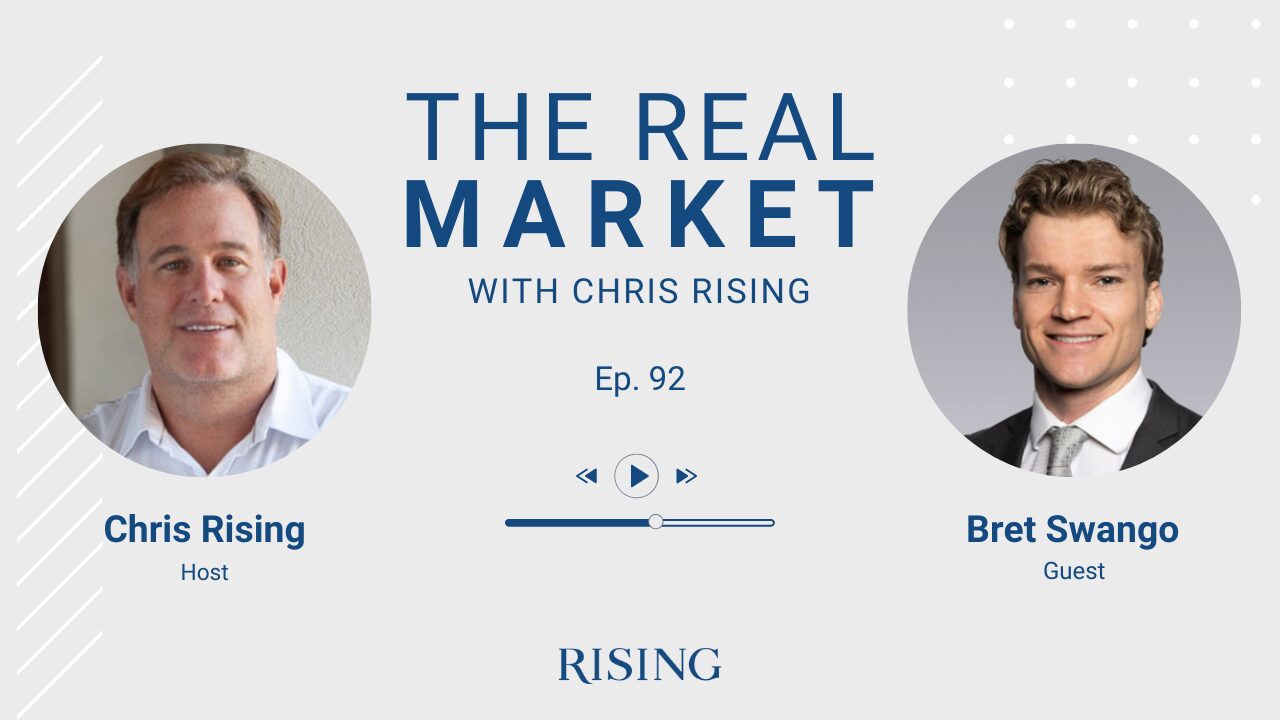
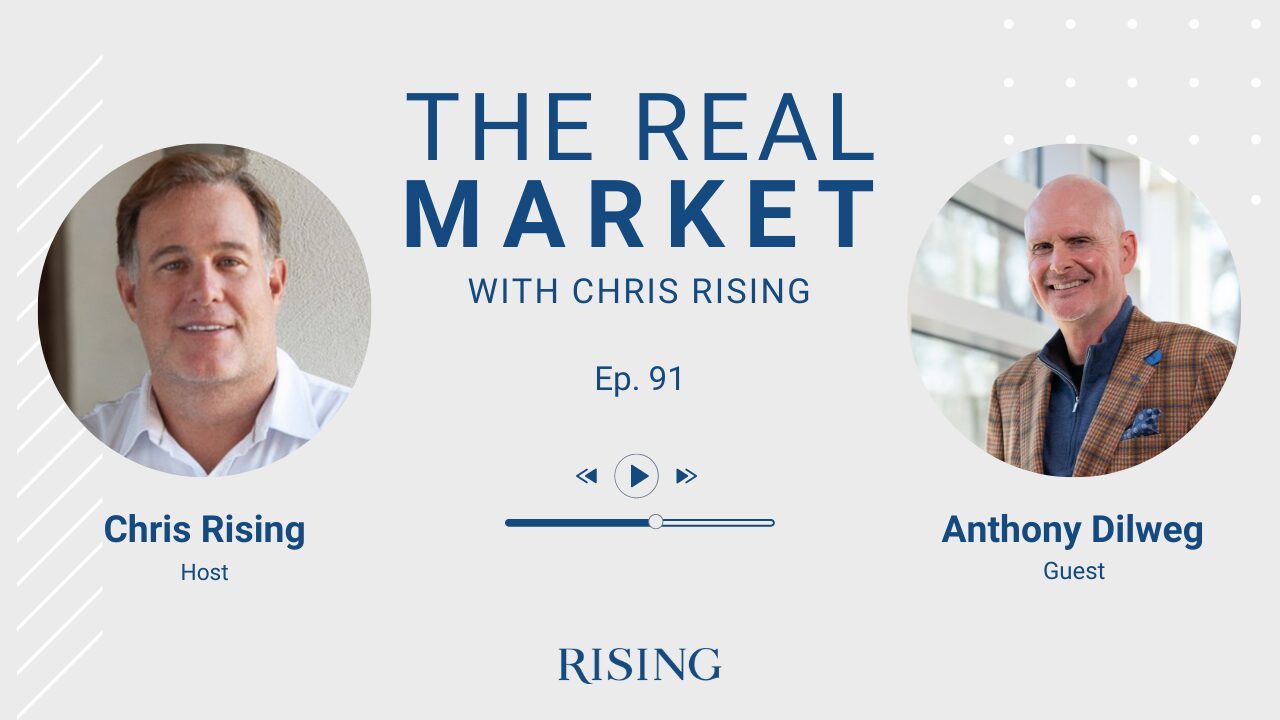
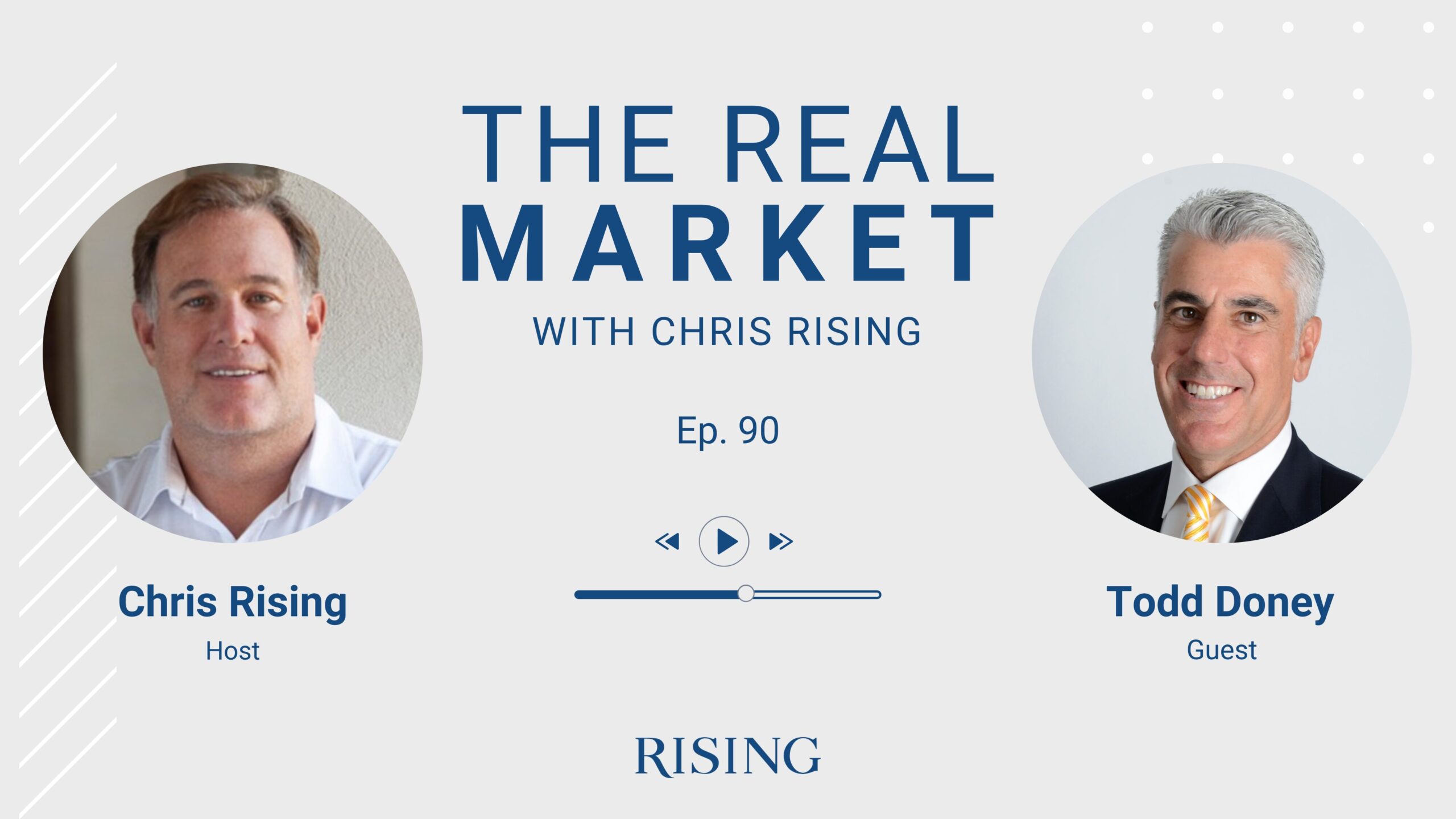


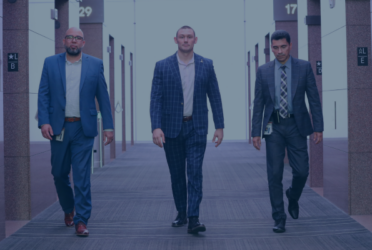
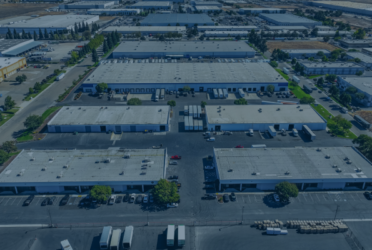
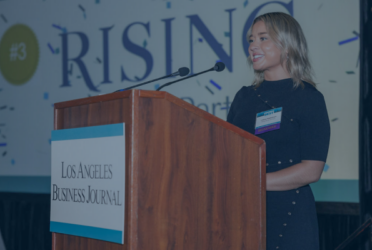


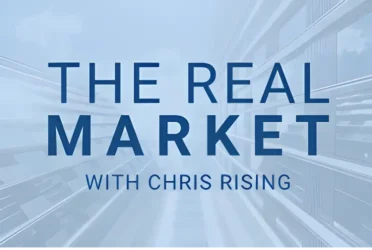 Podcast
Podcast